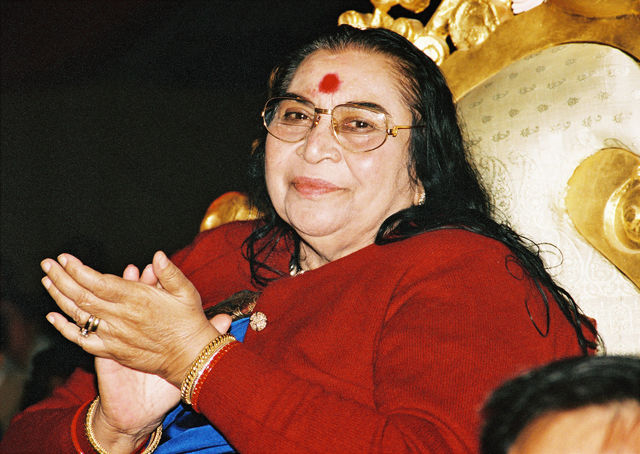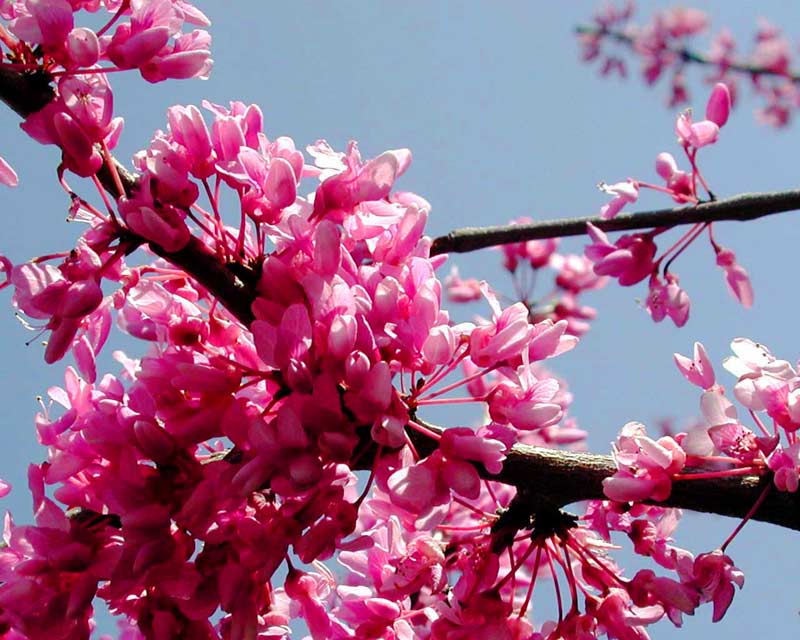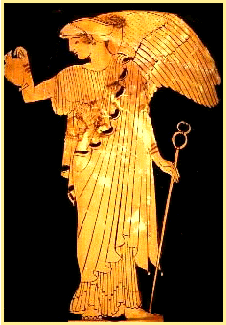cool breeze
 When you first attend a Sahaja Yoga public program, you receive your Self-realisation. After this you will be able to meditate immediately. Before you leave the program, you will be shown how to meditate at home each day. Also, you will receive a diagram of the Subtle Body, showing the seven energy centres or chakras, the central channel which goes up the spine, the left and right channels and the places on your hands where the chakras are connected to the nerve endings in your hands.
When you first attend a Sahaja Yoga public program, you receive your Self-realisation. After this you will be able to meditate immediately. Before you leave the program, you will be shown how to meditate at home each day. Also, you will receive a diagram of the Subtle Body, showing the seven energy centres or chakras, the central channel which goes up the spine, the left and right channels and the places on your hands where the chakras are connected to the nerve endings in your hands.
Self-realisation is the term we give to the initial complete rising of the Kundalini within a person’s spine and out of the top of the head. The Kundalini (a Sanskrit word meaning coils) is the creative power, or energy, which has created this world and everything in it. It is the female energy of the Divine, God, Brahma, Jahweh, or whatever name is used in the great religions to denote the highest spiritual Power.
When a baby is in the womb, it is the Kundalini that creates it. Babies stop growing about two weeks before they are due to be born, and that is when the Kundalini coils up in the sacrum bone at the base of the spine.
So, everyone has his or her own Kundalini coiled up in the sacrum bone. When the time comes in your personal evolution to grow from being a limited human being operating from the level of the brain, to an unlimited spiritual being operating from the level of your own Spirit (the reflection of the Divine), the force that created you, your Kundalini, makes that growth happen. It is your own desire that causes this. Your personal desire to have something more than you have now – some sort of inner peace – will cause your Kundalini to rise up the central channel, inside your spine.
This happens at the Sahaja Yoga program because the person conducting the program is guiding you at this stage. As you are desiring it to happen, your Kundalini will rise through your chakras and out of the top of your head, connecting you to the Collective Unconscious, gently and sweetly. At this point you may feel a cool breeze coming out of the top of your head. This cool breeze is referred to in the scriptures of the world’s major religions, as being the sign of the “twice-born”, i.e. people whose Kundalinis have risen. The cool breeze you can feel is your Kundalini. Thousands of people are now at the stage of their personal evolution where this happens. The founder of Sahaja Yoga, Shri Mataji, calls this mass level of evolution “the blossom time”.
The Collective Unconscious was so named by the psychologist, Dr Carl Jung, because it is the area from which we receive all the wisdom of the Divine. Some of the dreams we receive come from the Collective Unconscious; some do not. The wisdom received by the great souls who wrote the scriptures came to them from the Collective Unconscious when they were in meditation.
When your Kundalini comes up it connects you to the Collective Unconscious. When you learn, at Sahaja Yoga programs, how to keep your Kundalini up all the time, you will receive wisdom from your meditation, which will improve your daily life.
The most important time of your life now is when you receive your Self-realisation. You have it because you deserve it. It is wonderfully exciting to have one’s Self-realisation and be continually growing spiritually.
 I decided to try Sahaja Yoga meditation due to health reasons. I suffered from severe migraines, and I was sick of taking a range of strong medication to relieve them, and “losing” days due to the medication’s side-effects of nausea and grogginess. I found a local Sahaja Yoga class and started attending once a week. I wasn’t sure what to expect, but as I had tried other meditations I felt quite comfortable turning up.
I decided to try Sahaja Yoga meditation due to health reasons. I suffered from severe migraines, and I was sick of taking a range of strong medication to relieve them, and “losing” days due to the medication’s side-effects of nausea and grogginess. I found a local Sahaja Yoga class and started attending once a week. I wasn’t sure what to expect, but as I had tried other meditations I felt quite comfortable turning up.
The people who ran the classes were very nice, and I felt at home immediately. There were a handful of other attendees in the local community hall, and so we began. The subtle system was explained to us, and also a little on the various chakras or energy centres. I found it all very interesting, and was keen to continue.
We were guided through a short meditation. Afterwards, we were asked if we felt anything – perhaps a cool (or warm) breeze on our palms or the tops of our heads. All the people in the room put up their hands to acknowledge that they had felt something. Heads nodded, and there were smiles all around. But I felt nothing. I put my hand up, however, to acknowledge that I had felt something because I didn’t want to look stupid! All these other sensible, normal people could feel it. So I didn’t want to be the only one who missed out. I simply went along for the ride, agreeing with most things, but also enjoying the stillness of the meditation, and the information that came with our “experience”.
When I left the class I felt very relaxed. I’d had no amazing feelings; no out-of-body experience; simply a quietness and calmness. I tried to meditate at home during the week by following the brochure I had been given. Again, I couldn’t feel anything, but the ten minutes that I spent meditating became my quiet time. “Mum time”, my kids called it. It became my ten minutes of sanity and battery re-charging.
The following week I went along once more to classes, and the rest is history, as they say! I’ve been meditating now for six years. Whilst it took a very long time for me to feel the cool breeze on either my hands or my head, what I did feel was something inside. I simply felt better, and all aspects of my life seemed to improve because of this.
Looking back after six years, I can tell you what has happened to me. My migraines have almost completely gone, my health is good, and I can now “feel” when I have a chakra that needs attention. Consequently, now I can pay attention to my body’s needs, before a problem may arise.
A girlfriend once asked my 16-year old son, “What is this meditation business your Mum is doing all about? Is it any use?” His answer was, “She doesn’t yell at us anymore.” You could have knocked me over with a feather. I didn’t think I yelled at my kids! OK, a little bit maybe, but I had no idea I was having such a negative impact on my children. Now with the meditation I handle situations (both difficult and everyday ones) more easily and quickly. My response to my children, and other people I come in contact with each day, is positive and easy. Everybody’s happier!
There is so much more to Sahaja Yoga meditation than I have covered here, but I just wanted to let people know that it doesn’t matter what you may “feel” when you begin meditating, or even what you may think or understand about it. Just relax and sit in meditation, and it all seems to work out. You don’t even have to “do” the meditation. It is the easiest way to become centred; even my 6-year old can do it. And some days when I find I can’t meditate properly, because my brain won’t be still, or because I’m busy, I still gain serenity from sitting down for my ten minutes of peace. Now I’m pleased to say I often sit for longer than ten minutes to meditate, but the amount of time is not important – it’s the process of going within that gives me peace and serenity.
Good luck, have fun and enjoy the results!
Anna Penton
 The goddess Iris is the messenger of the Greek gods, and the personification of the rainbow. Like the Kundalini, she is a bridge connecting the human world with the divine. In yoga tradition it is said that union with the divine Self is impossible without the ascent of the Kundalini energy from the sacrum at the base of the spine.
The goddess Iris is the messenger of the Greek gods, and the personification of the rainbow. Like the Kundalini, she is a bridge connecting the human world with the divine. In yoga tradition it is said that union with the divine Self is impossible without the ascent of the Kundalini energy from the sacrum at the base of the spine.
Iris is particularly associated with the supreme goddess Hera (Juno), the wife of Zeus. Callimachus portrays Iris as sleeping under Hera’s throne. The throne of the Goddess is the Kundalini (called Merkabah in Hebrew).
It was sometimes said that Iris’s husband was the west wind, Zephyrus, the gentlest and most welcome of winds. When awakened within the subtle system of the body, the Kundalini is experienced as a gentle, cool breeze.
Her attributes are the caduceus and the vase of water from the river Styx. The caduceus is a symbol of the subtle system through which the Kundalini rises. It consists of a central staff (the Sushumna Nadi of Yoga) entwined by twin serpents (Ida and Pingala Nadis). The Kundalini is described as a serpent-like energy. Both the caduceus and Kundalini are associated with healing. The vase (Indian Kumbha) is a symbol of the Kundalini itself.
In Greek myth, Iris was often summoned to be present at councils of the gods so that she could pour out the Styx water and thereby discover whether or not truth was being told. Kundalini awakening is believed to confer the ability to discriminate truth directly on the nervous system.
Graham Brown
(Photograph: inf.nyme.hu)